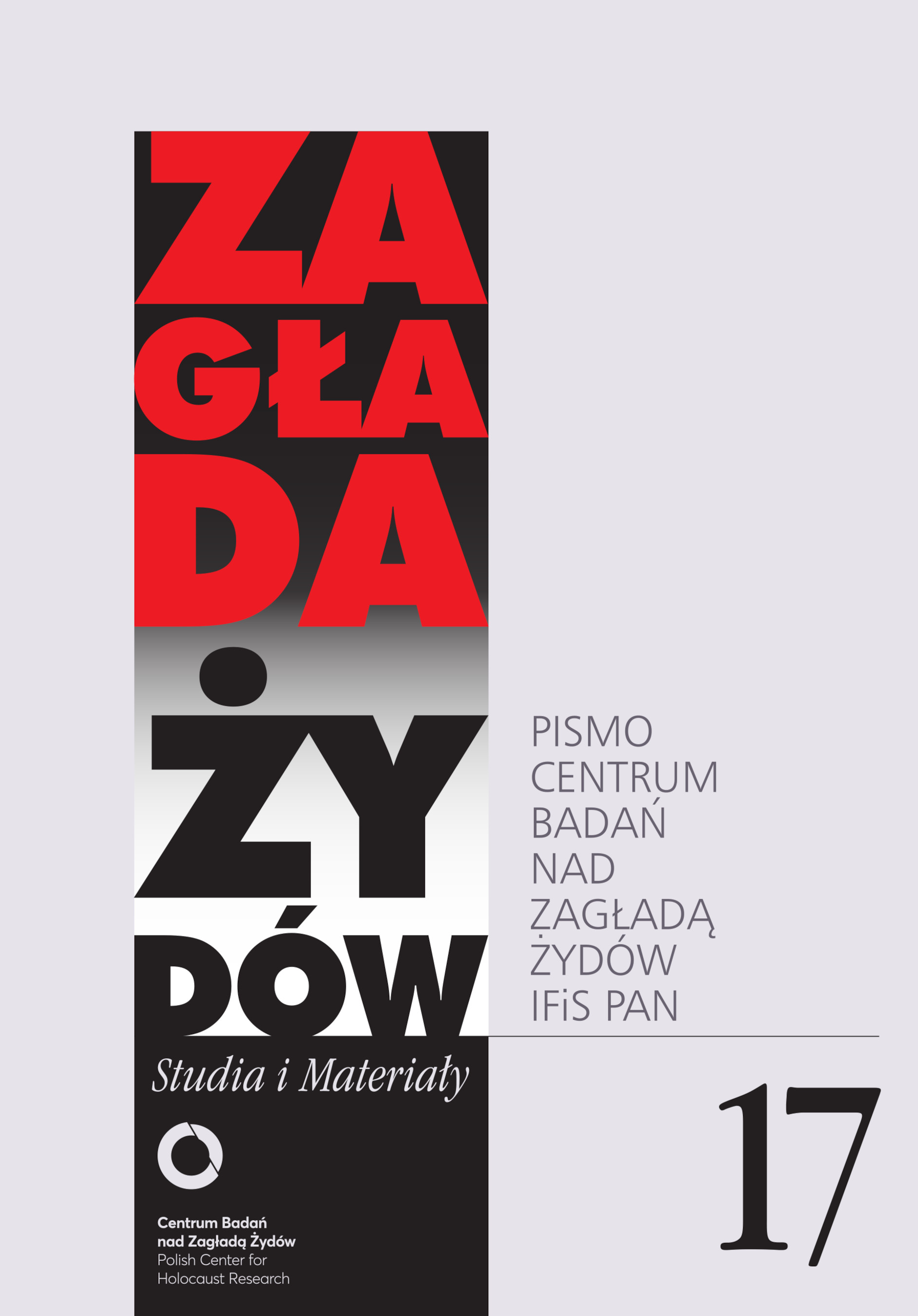A Violin in Auschwitz
Zagłada Żydów. Studia i Materiały, No. 17 (2021), Pages: 629-630
Submission Date: 2021-12-19Publication Date: 2021-12-20
 https://doi.org/10.32927/zzsim.899
https://doi.org/10.32927/zzsim.899
Abstract
In the music notation, a pause indicates the duration of the silence. Sometimes this silence is precisely dictated by the pace of the piece and the number of notes in the bar, in other cases it depends more on the inner sense of time of the player. It also happens that the composer writes down silence at the end of the piece, not trusting - perhaps rightly - the performer that he will be able to sense and understand it himself. Sometimes even the whole piece, as in the case of John Cage's famous 4'33, is actually written four and a half minutes of silence. Silence can be of great importance, it can be saturated with meanings or it can be completely empty.
Why am I writing about this?
...
Keywords
music in Auschwitz-Birkenau Museum
License
Copyright (c) 2021 Author & "Holocaust Studies and Materials"

This work is licensed under a Creative Commons Attribution 4.0 International License.
https://creativecommons.org/licenses/by/4.0
Most read articles by the same author(s)
- Maria Sławek, Music as a form of commemoration of the Warsaw Ghetto Uprising , Zagłada Żydów. Studia i Materiały: No. 19 (2023)
Similar Articles
- Piotr Trojański, “We need to send him one, because he is a ‘goldsmith’ or ‘Canada man’.” Case of an Oświęcim Camp Security guard , Zagłada Żydów. Studia i Materiały: No. 11 (2015)
- Zofia Wóycicka, , Preserving the Decorum. The New Permanent Exhibition in the Museum and Memorial Site in Sobibór , Zagłada Żydów. Studia i Materiały: No. 17 (2021)
- Marian Turski, “Więcej nic nie powiem…” [I won’t say more...] - interview with Marian Turski, a Łódź ghetto survivor of 28 August 2019 on the eve of celebrations of the anniversary of Łódź ghetto liquidation , Zagłada Żydów. Studia i Materiały: No. 16 (2020)
- Zofia Wóycicka, Holocaust Laboratory – New Historical Exhibition at the Former Kulmhof Death Center in Chełmno nad Nerem , Zagłada Żydów. Studia i Materiały: No. 16 (2020)
- Karolina Ożóg, “My life will begin on that day when I receive letters from you”. Correspondence of Jews who survived the Holocaust in the USSR and sought their relatives in Poland (1944–1945) , Zagłada Żydów. Studia i Materiały: No. 20 (2024)
- Marian Turski, A Łódź ghetto survivor’s speech delivered on 29 August 2019, during celebrations of the anniversary of Łódź ghetto liquidation , Zagłada Żydów. Studia i Materiały: No. 16 (2020)
- Marian Turski, Recollections of Łódź ghetto liquidation , Zagłada Żydów. Studia i Materiały: No. 16 (2020)
- Lior Inbar, We were always Don Quixotes: The Ghetto Fighters’ kibbutz in Israel , Zagłada Żydów. Studia i Materiały: No. 19 (2023)
- Maria Sławek, Music as a form of commemoration of the Warsaw Ghetto Uprising , Zagłada Żydów. Studia i Materiały: No. 19 (2023)
- Zofia Woycicka, In search of new ways to express what is difficult to comprehend. Holocaust museums and commemoration sites in the 21st century , Zagłada Żydów. Studia i Materiały: No. 20 (2024)
1 2 3 4 5 6 7 8 9 10 11 12 13 14 15 16 17 18 19 20 21 22 23 24 > >>
You may also start an advanced similarity search for this article.
 English
English
 Język Polski
Język Polski



 https://orcid.org/0000-0002-4228-1969
https://orcid.org/0000-0002-4228-1969





